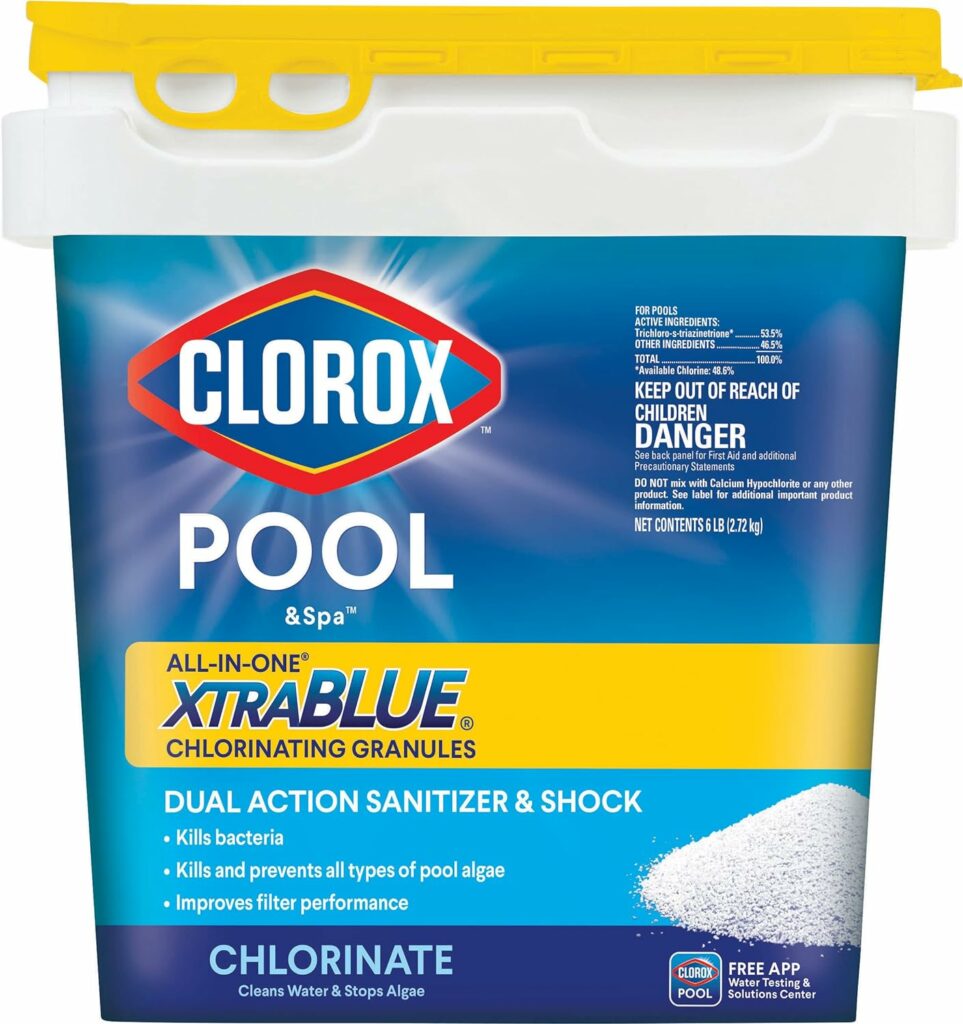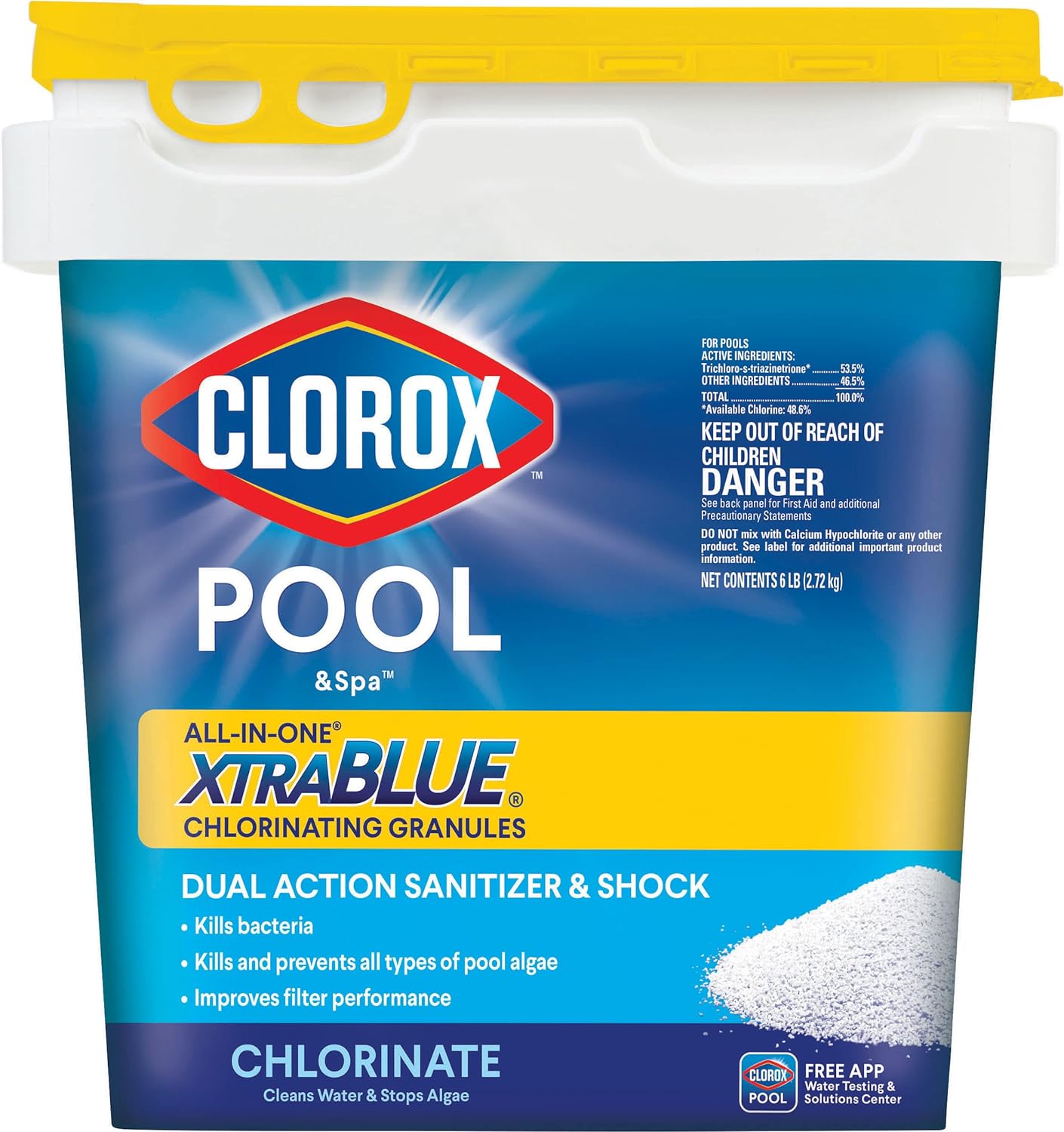Imagine stepping into your backyard on a warm, sunny day, ready to dive into the clear, sparkling blue waters of your swimming pool. The water is so inviting, it feels almost like a retreat right at home. However, the reality of keeping that pool pristine is a task that demands careful consideration and diligent maintenance. One of the pivotal decisions in pool care lies in choosing the right method for chlorination: Should you opt for convenient chlorine tablets or liquid solutions? This choice is not just about preference but about ensuring you make the best possible decision to maintain both the water’s quality and safety.
Both chlorine tablets for pools and liquid chlorine come with their own sets of benefits and challenges. While tablets are popular for their ease of use and consistent release of chlorine, liquid solutions are often favored for their immediate impact and effectiveness in pool shock treatments. You might find yourself at a crossroads, weighing the convenience of being “in the swim” with a more hands-on approach. In this post, we’ll delve deep into the specifics of both methods, helping you understand the nuances and ultimately assisting you in making an informed decision to keep your pool a sparkling oasis all summer long.
Pros and Cons of Using Chlorine Tablets
While there are many advantages to using chlorine tablets for pool maintenance, it’s important to consider both sides before making a decision.
One potential drawback of using chlorine tablets is that they can increase cyanuric acid levels in the water over time. Cyanuric acid acts as a stabilizer for chlorine, helping it withstand sunlight degradation. However, excessive levels can reduce the effectiveness of chlorine in killing bacteria and algae. Regular testing and monitoring of cyanuric acid levels is essential when using chlorine tablets.
Additionally, some people may find that handling chlorine tablets can be more challenging compared to liquid solutions. Tablets need to be placed in a floating dispenser or skimmer basket where they can dissolve slowly over time. This requires some manual labor compared to simply pouring liquid chlorine into the pool.

Proper Dosage and Application of Chlorine Tablets
When using chlorine tablets, it’s crucial to follow the manufacturer’s instructions for proper dosage and application. The dosage will depend on the size of your pool and the tablet’s concentration. It’s important not to exceed the recommended dosage, as this can lead to over-chlorination and potential damage to your pool equipment.
To ensure even distribution of chlorine throughout the pool, it’s recommended to use a floating dispenser or a skimmer basket. These devices will allow the tablets to dissolve slowly while circulating in the water. It’s also essential to regularly check and adjust the pH levels of your pool water, as high pH can reduce the effectiveness of chlorine.
Long-Term Effects on Pool Water Quality
Using chlorine tablets for an extended period can have both positive and negative effects on your pool water quality.
The consistent release of chlorine from tablets helps maintain a residual level in the water, which is essential for killing bacteria and preventing algae growth. This can result in clear, clean water that is safe for swimming.
However, as mentioned earlier, prolonged use of chlorine tablets can increase cyanuric acid levels. Regular testing is necessary to ensure that cyanuric acid remains within the recommended range (typically 30-50 ppm). If levels become too high, it may be necessary to partially drain and refill your pool to dilute the excess cyanuric acid.
Exploring Liquid Chlorine Solutions
Liquid chlorine solutions offer an alternative method for chlorinating your pool. Unlike tablets, liquid solutions provide an immediate impact on water quality due to their fast dissolving nature.
Liquid chlorine is often used for shock treatments when there is a sudden increase in bacteria or algae growth. It can quickly raise chlorine levels in the water, helping to eliminate any contaminants. This makes it an effective solution for addressing pool issues such as cloudy water or green algae.
Comparing Costs: Chlorine Tablets vs. Liquid Solutions
When considering the cost of chlorination, it’s important to compare the expenses associated with both chlorine tablets and liquid solutions.
Chlorine tablets are generally more cost-effective in the long run due to their slow release and longer-lasting nature. With tablets, you can avoid frequent purchases and have a consistent supply on hand.
Liquid chlorine solutions, on the other hand, may require more frequent purchases as they are used up quickly during shock treatments or when maintaining chlorine levels. However, they can be a more affordable option upfront compared to purchasing a large quantity of tablets.
Conclusion: Making the Best Choice for Your Pool
Choosing between chlorine tablets and liquid solutions ultimately depends on your specific needs and preferences as a pool owner.
If convenience and consistent maintenance are important to you, then chlorine tablets may be the ideal choice. They provide a steady release of chlorine over time, reducing the need for constant monitoring and adjustment.
On the other hand, if you frequently encounter issues such as algae growth or cloudy water, liquid chlorine solutions may offer a quicker solution due to their immediate impact on water quality.
Ultimately, it’s essential to regularly test your pool water and monitor its condition regardless of which method you choose. This will ensure that your pool remains clean, safe, and ready for enjoyment all summer long.
What is the difference between using chlorine tablets in your pool versus using liquid chlorine bleach instead?
The main difference between using chlorine tablets and liquid chlorine bleach in your pool lies in their form and application.
Chlorine tablets are solid and slowly dissolve in the water, releasing chlorine over time. They are typically placed in a floating dispenser or skimmer basket for even distribution. On the other hand, liquid chlorine bleach is a liquid form of chlorine that can be poured directly into the pool.
Both forms of chlorine can effectively sanitize the water and kill bacteria and algae. However, tablets provide a more controlled release over time, while liquid bleach offers immediate impact.
How often should people put chlorine tablets in a pool?
The frequency of adding chlorine tablets to your pool depends on various factors such as the size of your pool, bather load, weather conditions, and the tablet’s concentration.
As a general guideline, it’s recommended to add new tablets every 5-7 days. However, regular testing of chlorine levels is crucial to ensure that they remain within the appropriate range (typically 1-3 ppm). If levels drop below this range, additional tablets may be required sooner.
What is the best way to put chlorine in a pool: tablets or liquid?
The best way to put chlorine in your pool depends on your specific needs and preferences as well as the current condition of your pool.
If you prefer convenience and consistent maintenance with minimal effort, then using chlorine tablets may be the best option for you. Tablets provide a slow release of chlorine over time, reducing the need for frequent monitoring and adjustment.
On the other hand, if you are dealing with specific issues such as algae growth or cloudy water that require immediate attention, using liquid chlorine may be more effective. Liquid solutions dissolve quickly in the water and can rapidly raise chlorine levels to address these problems.
How does one properly add chlorine tablets or liquid into a new swimming pool filter system?
When adding chlorine tablets or liquid into a new swimming pool filter system, it’s important to follow the manufacturer’s instructions and guidelines.
If using chlorine tablets, place them in a floating dispenser or skimmer basket. This will allow the tablets to dissolve slowly while circulating in the water. It’s important not to place the tablets directly into the pool as they can sink to the bottom and cause damage to the pool surface.
If using liquid chlorine, pour it directly into the pool while standing at the edge. Avoid pouring it near any pool equipment or surfaces as it can cause damage. It’s also recommended to distribute the liquid chlorine evenly throughout the pool by walking around its perimeter.
How often do you add chlorine to your pool?
The frequency of adding chlorine to your pool depends on various factors such as bather load, weather conditions, and chlorine levels.
As a general guideline, it’s recommended to test your pool water at least once a week and adjust chlorine levels accordingly. This may involve adding additional chlorine if levels are low or reducing dosage if they are too high.
How many chlorine tablets should I put in my pool?
The number of chlorine tablets you should put in your pool depends on several factors such as the size of your pool and tablet concentration.
As a general rule of thumb, one 3-inch tablet is typically sufficient for every 5,000 gallons of water. However, it’s important not to exceed the recommended dosage for your specific tablet brand and concentration.


